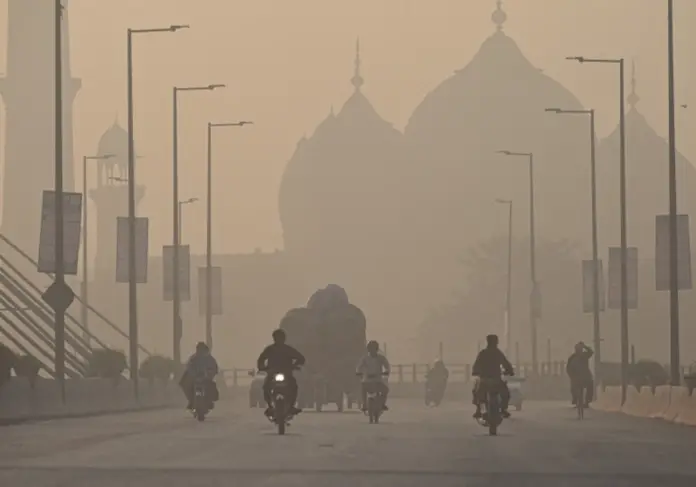The Punjab Environmental Protection Agency (EPA) has been sharing wrong Air Quality Index (AQI) figures in the previous months due to an error, said an official.
The spokesman of EPA, Dr. Amir Farooq attributed the flawed readings to a human error while calculating air quality. Talking exclusively to Minute Mirror, he said, “For some days readings were being released without considering the breakouts while applying the formula to calculate air quality using AQI.” After identification of the issue, he said that now, the error had been removed and the values of air quality were authentic.
On the other hand, the drop in mercury and increasing dew factor have also helped improve the city’s air quality. Experts have warned that despite the decrease in mercury and better air quality, the metrological conditions were not favorable for the health of the city’s residents. According to Meteorological Department, there was no rain forecast until next Thursday and it has predicted cold and dry weather till then.
The misquoted data, which was not correctly formulated by the officials, became an embarrassment for Punjab EPA. According to the official data, Lahore was a polluted city, but the officials were claiming that it was not as polluted as the air quality readings from private sources were showing. After investigating, the officials managed to get the actual air quality readings by removing the error.
After the correction, the air quality showed a significant decrease in the city’s air pollution, according to an official report of daily air quality using the AQI. Last month, Lahore’s air pollution was topping the charts worldwide for crossing the hazardous level, according to the readings released by IQAir website. These readings were refuted by Punjab EPA, which stated that it was an attempt to defame the country. EPA had also directed authorities to take action against any private air quality monitor for releasing ‘fake’ readings using AQI.
Later, from the mid of November, Punjab’s EPA started releasing daily AQI after monitoring the air quality in different areas of Lahore. Before releasing the data, EPA stated that Lahore’s air quality was not high as it was being depicted by the private agents, claiming that they were using cheap or uncertified equipment.
The air quality readings using the AQI, released by EPA itself were even higher and it was slightly less than the air quality readings by private agents. AQI is based on the presence of particulate matter (PM2.5) in the atmosphere. For example, a measurement of 364 on the AQI would mean that 131 values of PM2.5 had been recorded. Likewise, for the reading 141 and 171 of PM2.5, the measurement on AQI would be 401 and 420 respectively.
The EPA on Thursday shared the latest reading of the last 24 hours on the base of PM 2.5, which showed a significant decrease in the pollutants. It released the new readings as 223 and 236 for 165 and 180 values of PM2.5 respectively. Many quarters raised their concerns for a gap between PM2.5 value and AQI.
Dr Nihal Syed, an environmental expert, said that the new AQI released by EPA shows relevance with PM2.5 value, but earlier, either the PM2.5 was not being measured accurately or there was issue in calculation.







